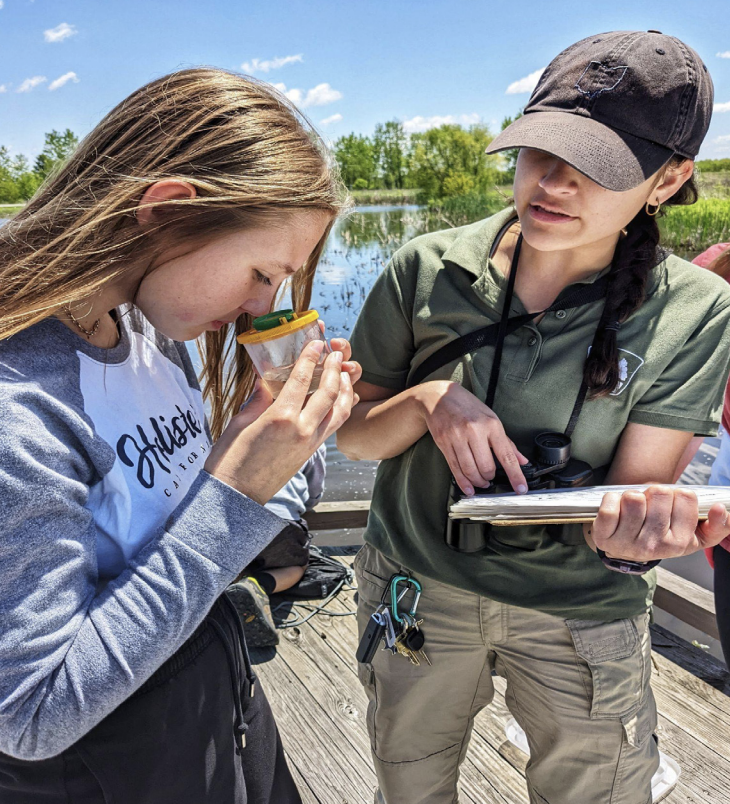
Collaborative Efforts to Preserve Ohio’s Wetlands: A Report on Recent Initiatives
In the Ohio Wetlands Association’s (OWA) latest newsletter, we delve into recent collaborative efforts, conservation projects, and scientific advancements aimed at preserving Ohio’s wetlands. This season’s highlights feature OWA’s work with the Ohio Division of Forestry, wood duck conservation at Winous Point Marsh, and critical discussions on the impact of invasive species like Eurasian Watermilfoil. Here’s an overview of some of the most compelling articles.
Ohio Wetlands Association Partners with Division of Forestry
The OWA, led by Vice President and Policy Committee Chair Mick Micacchion, has initiated a promising partnership with Ohio’s Division of Forestry (DOF) to mitigate the impact of logging on sensitive wetland habitats in Tar Hollow State Forest. After observing damage to vernal pools that serve as essential habitats for wood frogs, OWA’s leadership reached out to DOF to discuss protective measures. DOF responded promptly, proposing a collaboration to train staff in identifying isolated wetlands and vernal pools, with the goal of incorporating these insights into forest management plans. This partnership reflects the OWA’s commitment to sustainable practices that protect Ohio’s valuable natural resources.
Wood Duck Nest Box Monitoring at Winous Point Marsh
In an engaging article, Jess Schmit from the Winous Point Marsh Conservancy shares her experiences with wood duck conservation through nest box monitoring. Wood ducks, once nearly extinct due to habitat loss and overhunting, have benefited significantly from artificial nesting structures. Schmit describes her efforts to restore old wood duck boxes, utilizing protective designs and materials to deter predators and improve nesting conditions. This hands-on project reflects a broader effort to sustain Ohio’s wood duck populations, blending habitat restoration with an educational aspect to inspire the next generation in conservation.
Combatting Eurasian Watermilfoil: A Persistent Invasive Threat
The aggressive spread of Eurasian Watermilfoil in Ohio’s wetlands poses a significant threat to native plant species and water ecosystems. Kate Gorman from MAD Scientist Associates details how this invasive plant outcompetes native vegetation by forming thick mats that block sunlight and reduce oxygen levels, impairing aquatic life. Various management strategies, from biological control using North American weevils to mechanical harvesting, are being explored to curb its spread. This issue highlights the urgent need for sustained invasive species management to protect Ohio’s biodiversity.
Navigable Waters Protection Rule: Policy Changes and Potential Impacts
In a comprehensive analysis, Mary Skapof discusses the implications of the 2020 Navigable Waters Protection Rule, which narrows the scope of federally protected waters under the Clean Water Act. Although Ohio has protective measures in place for isolated wetlands, there is concern over potential habitat loss for many ephemeral streams and wetlands not covered by federal regulations. OWA emphasizes the need for state and local authorities to step up their efforts in conserving these critical habitats.
Becoming a Certified Interpretive Guide: Engaging the Public in Wetland Conservation
OWA Ambassador Ray Stewart and Board Member Giovanna Reising recently became certified interpretive guides, equipped with skills to engage audiences at nature centers, parks, and events. By sharing knowledge about Ohio’s diverse wetland ecosystems, Ray and Giovanna aim to foster a deeper appreciation for wetland conservation among Ohioans, strengthening the community’s connection to these natural habitats.
These articles and more underscore the Ohio Wetlands Association’s dedication to protecting and enhancing Ohio’s wetland ecosystems. From policy advocacy to hands-on conservation projects, OWA’s initiatives reflect a deep commitment to a healthier, more biodiverse Ohio.
For more information or to get involved with the Ohio Wetlands Association, visit www.OHwetlands.org